Email and Document properties
- The Tech Platform

- Nov 28, 2020
- 18 min read
This topic describes the email and document properties that you can search for in email items in Exchange Online and documents stored on SharePoint and OneDrive for Business sites by using the Content Search feature in the Microsoft 365 compliance center. You can also use the *-ComplianceSearch cmdlets in Security & Compliance Center PowerShell to search for these properties. The topic also describes:
Using Boolean search operators, search conditions, and other search query techniques to refine your search results.
Searching for sensitive data types and custom sensitive data types in SharePoint and OneDrive for Business.
Searching for site content that's shared with users outside of your organization
For step-by-step instructions on how to create a Content Search, see Content Search.
Note Content Search in the Microsoft 365 compliance center and the corresponding *-ComplianceSearch cmdlets in Security & Compliance Center PowerShell use the Keyword Query Language (KQL).
Searchable email properties
The following table lists email message properties that can be searched by using the Content Search feature in the Microsoft 365 compliance center or by using the New-ComplianceSearch or the Set-ComplianceSearch cmdlet. The table includes an example of the property:value syntax for each property and a description of the search results returned by the examples. You can type these property:value pairs in the keywords box for a Content Search.
Note When searching email properties, it's not possible to search for items in which the specified property is empty or blank. For example, using the property:value pair of subject:"" to search for email messages with an empty subject line will return zero results. This also applies when searching site and contact properties.
AttachmentNames
The names of files attached to an email message.
attachmentnames:annualreport.ppt
attachmentnames:annual*
attachmentnames:.pptxMessages that have an attached file named annualreport.ppt. In the second example, using the wildcard returns messages with the word "annual" in the file name of an attachment. The third example returns all attachments with the pptx file extension.
Bcc
The Bcc field of an email message.
bcc:pilarp@contoso.com
bcc:pilarp
bcc:"Pilar Pinilla"All examples return messages with Pilar Pinilla included in the Bcc field.
Category
The categories to search. Categories can be defined by users by using Outlook or Outlook on the web (formerly known as Outlook Web App). The possible values are:
blue
green
orange
purple
red
yellow
category:"Red Category"Messages that have been assigned the red category in the source mailboxes.
Cc
The Cc field of an email message.
cc:pilarp@contoso.com
cc:"Pilar Pinilla"In both examples, messages with Pilar Pinilla specified in the Cc field.
Folderid
The folder ID (GUID) of a specific mailbox folder. If you use this property, be sure to search the mailbox that the specified folder is located in. Only the specified folder will be searched. Any subfolders in the folder won't be searched. To search subfolders, you need to use the Folderid property for the subfolder you want to search. For more information about searching for the Folderid property and using a script to obtain the folder IDs for a specific mailbox, see Use Content Search for targeted collections.
folderid:4D6DD7F943C29041A65787E30F02AD1F00000000013A0000
folderid:2370FB455F82FC44BE31397F47B632A70000000001160000 AND participants:garthf@contoso.com The first example returns all items in the specified mailbox folder. The second example returns all items in the specified mailbox folder that were sent or received by garthf@contoso.com.
From
The sender of an email message.
from:pilarp@contoso.com
from:contoso.com Messages sent by the specified user or sent from a specified domain.
HasAttachment
Indicates whether a message has an attachment. Use the values true or false.
from:pilar@contoso.com AND hasattachment:trueMessages sent by the specified user that have attachments.
Importance
The importance of an email message, which a sender can specify when sending a message. By default, messages are sent with normal importance, unless the sender sets the importance as high or low.
importance:high
importance:medium
importance:lowMessages that are marked as high importance, medium importance, or low importance.
IsRead
Indicates whether messages have been read. Use the values true or false.
isread:true
isread:falseThe first example returns messages with the IsRead property set to True. The second example returns messages with the IsRead property set to False.
ItemClass
Use this property to search specific third-party data types that your organization imported to Office 365. Use the following syntax for this property: itemclass:ipm.externaldata.<third-party data type>*
itemclass:ipm.externaldata.Facebook* AND subject:contoso
itemclass:ipm.externaldata.Twitter* AND from:"Ann Beebe" AND "Northwind Traders"The first example returns Facebook items that contain the word "contoso" in the Subject property. The second example returns Twitter items that were posted by Ann Beebe and that contain the keyword phrase "Northwind Traders". For a complete list of values to use for third-party data types for the ItemClass property, see Use Content Search to search third-party data that was imported to Office 365.
Kind
The type of email message to search for. Possible values:
contacts
docs
email
externaldata
faxes
im
journals
meetings
microsoftteams (returns items from chats, meetings, and calls in Microsoft Teams)
notes
posts
rssfeeds
tasks
voicemail
kind:email
kind:email OR kind:im OR kind:voicemail
kind:externaldataThe first example returns email messages that meet the search criteria. The second example returns email messages, instant messaging conversations (including Skype for Business conversations and chats in Microsoft Teams), and voice messages that meet the search criteria. The third example returns items that were imported to mailboxes in Microsoft 365 from third-party data sources, such as Twitter, Facebook, and Cisco Jabber, that meet the search criteria. For more information, see Archiving third-party data in Office 365.
Participants
All the people fields in an email message. These fields are From, To, Cc, and Bcc.
participants:garthf@contoso.com
participants:contoso.com Messages sent by or sent to garthf@contoso.com. The second example returns all messages sent by or sent to a user in the contoso.com domain.
Received
The date that an email message was received by a recipient.
received:04/15/2016
received>=01/01/2016 AND received<=03/31/2016Messages that were received on April 15, 2016. The second example returns all messages received between January 1, 2016 and March 31, 2016.
Recipients
All recipient fields in an email message. These fields are To, Cc, and Bcc.
Messages sent to garthf@contoso.com. The second example returns messages sent to any recipient in the contoso.com domain.
Sent
The date that an email message was sent by the sender.
sent:07/01/2016
sent>=06/01/2016 AND sent<=07/01/2016Messages that were sent on the specified date or sent within the specified date range.
Size
The size of an item, in bytes.
size>26214400
size:1..1048567Messages larger than 25??MB. The second example returns messages from 1 through 1,048,567 bytes (1 MB) in size.
Subject
The text in the subject line of an email message. Note: When you use the Subject property in a query, the search returns all messages in which the subject line contains the text you're searching for. In other words, the query doesn't return only those messages that have an exact match. For example, if you search for subject:"Quarterly Financials", your results will include messages with the subject "Quarterly Financials 2018".
subject:"Quarterly Financials"
subject:northwindMessages that contain the phrase "Quarterly Financials" anywhere in the text of the subject line. The second example returns all messages that contain the word northwind in the subject line.
To
The To field of an email message.
to:annb@contoso.com
to:annb
to:"Ann Beebe"All examples return messages where Ann Beebe is specified in the To: line.
Note 1 For the value of a recipient property, you can use email address (also called user principal name or UPN), display name, or alias to specify a user. For example, you can use annb@contoso.com, annb, or "Ann Beebe" to specify the user Ann Beebe.
Recipient expansion
When searching any of the recipient properties (From, To, Cc, Bcc, Participants, and Recipients), Microsoft 365 attempts to expand the identity of each user by looking them up in Azure Active Directory (Azure AD). If the user is found in Azure AD, the query is expanded to include the user's email address (or UPN), alias, display name, and LegacyExchangeDN. For example, a query such as participants:ronnie@contoso.com expands to participants:ronnie@contoso.com OR participants:ronnie OR participants:"Ronald Nelson" OR participants:"<LegacyExchangeDN>".
To prevent recipient expansion, add a wild card character (asterisk) to the end of the email address and use a reduced domain name; for example, participants:"ronnie@contoso*" Be sure to surround the email address with double quotation marks.
However, be aware that preventing recipient expansion in the search query may result in relevant items not being returned in the search results. Email messages in Exchange can be saved with different text formats in the recipient fields. Recipient expansion is intended to help mitigate this fact by returning messages that may contain different text formats. So preventing recipient expansion may result in the search query not returning all items that may be relevant to your investigation.
Note If you need to review or reduce the items returned by a search query due to recipient expansion, consider using Advanced eDiscovery. You can search for messages (taking advantage of recipient expansion), add them to a review set, and then use review set queries or filters to review or narrow the results. For more information, see Collect data for a case and Query the data in a review set.
Searchable site properties
The following table lists some of the SharePoint and OneDrive for Business properties that can be searched by using the Content Search feature in the Security & Compliance Center or by using the New-ComplianceSearch or the Set-ComplianceSearch cmdlet. The table includes an example of the property:value syntax for each property and a description of the search results returned by the examples.
For a complete list of SharePoint properties that can be searched, see Overview of crawled and managed properties in SharePoint. Properties marked with a Yes in the Queryable column can be searched.
Author
The author field from Office documents, which persists if a document is copied. For example, if a user creates a document and the emails it to someone else who then uploads it to SharePoint, the document will still retain the original author. Be sure to use the user's display name for this property.
author:"Garth Fort"All documents that are authored by Garth Fort.
ContentType
The SharePoint content type of an item, such as Item, Document, or Video.
contenttype:documentAll documents would be returned.
Created
The date that an item is created.
created>=06/01/2016All items created on or after June 1, 2016.
CreatedBy
The person that created or uploaded an item. Be sure to use the user's display name for this property.
createdby:"Garth Fort"All items created or uploaded by Garth Fort.
DetectedLanguage
The language of an item.
detectedlanguage:englishAll items in English.
DocumentLink
The path (URL) of a specific folder on a SharePoint or OneDrive for Business site. If you use this property, be sure to search the site that the specified folder is located in. To return items located in subfolders of the folder that you specify for the documentlink property, you have to add /* to the URL of the specified folder; for example, documentlink: "https://contoso.sharepoint.com/Shared Documents/*" For more information about searching for the documentlink property and using a script to obtain the documentlink URLs for folders on a specific site, see Use Content Search for targeted collections.
documentlink:"https://contoso-my.sharepoint.com/personal/garthf_contoso_com/Documents/Private"
documentlink:"https://contoso-my.sharepoint.com/personal/garthf_contoso_com/Documents/Shared with Everyone/*" AND filename:confidentialThe first example returns all items in the specified OneDrive for Business folder. The second example returns documents in the specified site folder (and all subfolders) that contain the word "confidential" in the file name.
FileExtension
The extension of a file;
for example, docx, one, pptx, or xlsx.fileextension:xlsxAll Excel files (Excel 2007 and later)
FileName
The name of a file.
filename:"marketing plan"
filename:estimateThe first example returns files with the exact phrase "marketing plan" in the title. The second example returns files with the word "estimate" in the file name.
LastModifiedTime
The date that an item was last changed.
lastmodifiedtime>=05/01/2016
lastmodifiedtime>=05/10/2016 AND lastmodifiedtime<=06/1/2016The first example returns items that were changed on or after May 1, 2016. The second example returns items changed between May 1, 2016 and June 1, 2016.
ModifiedBy
The person who last changed an item. Be sure to use the user's display name for this property.
modifiedby:"Garth Fort"All items that were last changed by Garth Fort.
Path
The path (URL) of a specific site in a SharePoint or OneDrive for Business site. To return items located in folders in the site that you specify for the path property, you have to add /* to the URL of the specified site; for example, path: "https://contoso.sharepoint.com/Shared Documents/*" Note: Using the Path property to search OneDrive locations won't return media files, such as .png, .tiff, or .wav files, in the search results. Use a different site property in your search query to search for media files in OneDrive folders.
path:"https://contoso-my.sharepoint.com/personal/garthf_contoso_com/"
path:"https://contoso-my.sharepoint.com/personal/garthf_contoso_com/*" AND filename:confidentialThe first example returns all items in the specified OneDrive for Business site. The second example returns documents in the specified site (and folders in the site) that contain the word "confidential" in the file name.
SharedWithUsersOWSUser
Documents that have been shared with the specified user and displayed on the Shared with me page in the user's OneDrive for Business site. These are documents that have been explicitly shared with the specified user by other people in your organization. When you export documents that match a search query that uses the SharedWithUsersOWSUser property, the documents are exported from the original content location of the person who shared the document with the specified user. For more information, see Searching for site content shared within your organization.
sharedwithusersowsuser:garthf
sharedwithusersowsuser:"garthf@contoso.com"Both examples return all internal documents that have been explicitly shared with Garth Fort and that appear on the Shared with me page in Garth Fort's OneDrive for Business account.
Site
The URL of a site or group of sites in your organization.
site:"https://contoso-my.sharepoint.com"
site:"https://contoso.sharepoint.com/sites/teams" The first example returns items from the OneDrive for Business sites for all users in the organization. The second example returns items from all team sites.
Size
The size of an item, in bytes.
size>=1
size:1..10000The first example returns items larger than 1 byte. The second example returns items from 1 through 10,000 bytes in size.
Title
The title of the document. The Title property is metadata that's specified in Microsoft Office documents. It's different from the file name of the document.
title:"communication plan"Any document that contains the phrase "communication plan" in the Title metadata property of an Office document.
Searchable contact properties
The following table lists the contact properties that are indexed and that you can search for using Content Search. These are the properties that are available for users to configure for the contacts (also called personal contacts) that are located in the personal address book of a user's mailbox. To search for contacts, you can select the mailboxes to search and then use one or more contact properties in the keyword query.
Tip To search for values that contain spaces or special characters, use double quotation marks (" ") to contain the phrase; for example, businessaddress:"123 Main Street".
Searchable sensitive data types
You can use the Content Search feature in the compliance center to search for sensitive data, such as credit card numbers or social security numbers, that is stored in documents on SharePoint and OneDrive for Business sites. You can do this by using the SensitiveType property and the name of a sensitive information type in a keyword query. For example, the query SensitiveType:"Credit Card Number" returns documents that contain a credit card number. The query SensitiveType:"U.S. Social Security Number (SSN)" returns documents that contain a U.S. social security number. To see a list of the sensitive data types that you can search for, go to Data classifications > Sensitive info types in the Microsoft 365 compliance center. Or you can use the Get-DlpSensitiveInformationType cmdlet in Security & Compliance Center PowerShell to display a list of sensitive information types.
Limitations for searching sensitive data types
You can only use the SensitiveType property to search for built-in sensitive info data types. You can't search for custom sensitive data types that you (or another administrator) created for your organization. Use the Publisher column on the Sensitive info types tab in the compliance center (or the Publisher property in PowerShell) to differentiate between built-in and custom sensitive information types. Built-in sensitive data types are identified by the Microsoft Corporation value in the Publisher column.
You can't use sensitive info data types and the SensitiveType search property to search for sensitive data at-rest in Exchange Online mailboxes. However, you can use data loss prevention (DLP) policies to protect sensitive email data in transit. For more information, see Overview of data loss prevention policies and Search for and find personal data.
Search operators
Boolean search operators, such as AND, OR, and NOT, help you define more-precise searches by including or excluding specific words in the search query. Other techniques, such as using property operators (such as >= or ..), quotation marks, parentheses, and wildcards, help you refine a search query.
The following table lists the operators that you can use to narrow or broaden search results.
Note 1 Use this operator for properties that have date or numeric values. 2 Boolean search operators must be uppercase; for example, AND. If you use a lowercase operator, such as and, it will be treated as a keyword in the search query.
Search conditions
You can add conditions to a search query to narrow a search and return a more refined set of results. Each condition adds a clause to the KQL search query that is created and run when you start the search.
Conditions for common properties
Create a condition using common properties when searching mailboxes and sites in the same search. The following table lists the available properties to use when adding a condition.
Conditions for mail properties
Create a condition using mail properties when searching mailboxes or public folders. The following table lists the email properties that you can use for a condition. These properties are a subset of the email properties that were previously described. These descriptions are repeated for your convenience.
Conditions for document properties
Create a condition using document properties when searching for documents on SharePoint and OneDrive for Business sites. The following table lists the document properties that you can use for a condition. These properties are a subset of the site properties that were previously described. These descriptions are repeated for your convenience.
Operators used with conditions
When you add a condition, you can select an operator that is relevant to type of property for the condition. The following table describes the operators that are used with conditions and lists the equivalent that is used in the search query.
Guidelines for using conditions
Keep the following in mind when using search conditions.
A condition is logically connected to the keyword query (specified in the keyword box) by the AND operator. That means that items have to satisfy both the keyword query and the condition to be included in the results. This is how conditions help to narrow your results.
If you add two or more unique conditions to a search query (conditions that specify different properties), those conditions are logically connected by the AND operator. That means only items that satisfy all the conditions (in addition to any keyword query) are returned.
If you add more than one condition for the same property, those conditions are logically connected by the OR operator. That means items that satisfy the keyword query and any one of the conditions are returned. So, groups of the same conditions are connected to each other by the OR operator and then sets of unique conditions are connected by the AND operator.
If you add multiple values (separated by commas or semi-colons) to a single condition, those values are connected by the OR operator. That means items are returned if they contain any of the specified values for the property in the condition.
The search query that is created by using the keywords box and conditions is displayed on the Search page, in the details pane for the selected search. In a query, everything to the right of the notation (c:c) indicates conditions that are added to the query.
Conditions only add properties to the search query; the don't add operators. This is why the query displayed in the detail pane doesn't show operators to the right of the (c:c) notation. KQL adds the logical operators (according to the previously explained rules) when the executing the query.
You can use the drag and drop control to resequence the order of conditions. Click on the control for a condition and move it up or down.
As previously explained, some condition properties allow you to type multiple values. Each value is logically connected by the OR operator. This results in the same logic as having multiple instances of the same condition, where each has a single value. The following illustrations show an example of a single condition with multiple values and an example of multiple conditions (for the same property) with a single value. Both examples result in the same query: (filetype:docx) OR (filetype:pptx) OR (filetype:xlsx)
Tip If a condition accepts multiple values, we recommend that you use a single condition and specify multiple values (separated by commas or semi-colons). This helps ensure the query logic that's applied is what you intend.
Examples of using conditions in search queries
The following examples show the GUI-based version of a search query with conditions, the search query syntax that is displayed in the details pane of the selected search (which is also returned by the Get-ComplianceSearch cmdlet), and the logic of the corresponding KQL query.
Example 1
This example returns documents on SharePoint and OneDrive for Business sites that contain a credit card number and were last modified before January 1, 2016.
GUI
Search query syntax
SensitiveType:"Credit Card Number"(c:c)(lastmodifiedtime<2016-01-01)Search query logic
SensitiveType:"Credit Card Number" AND (lastmodifiedtime<2016-01-01)Example 2
This example returns email items or documents that contain the keyword "report", that were sent or created before April 1, 2105, and that contain the word "northwind" in the subject field of email messages or in the title property of documents. The query excludes Web pages that meet the other search criteria.
GUI
Search query syntax
report(c:c)(date<2016-04-01)(subjecttitle:"northwind")(-filetype:aspx)Search query logic
report AND (date<2016-04-01) AND (subjecttitle:"northwind") NOT (filetype:aspx)Example 3
This example returns email messages or calendar meetings that were sent between 12/1/2016 and 11/30/2016 and that contain words that start with "phone" or "smartphone".
GUI
Search query syntax
phone* OR smartphone*(c:c)(sent=2016-12-01..2016-11-30)(kind="email")(kind="meetings")Search query logic
phone* OR smartphone* AND (sent=2016-12-01..2016-11-30) AND ((kind="email") OR (kind="meetings"))
Special characters
Some special characters are not included in the search index and therefore are not searchable. This also includes the special characters that represent search operators in the search query. Here's a list of special characters that are either replaced by a blank space in the actual search query or cause a search error.
+ - = : ! @ # % ^ & ; _ / ? ( ) [ ] { }
Searching for site content shared with external users
You can also use the Content Search feature in the Security & Compliance Center to search for documents stored on SharePoint and OneDrive for Business sites that have been shared with people outside of your organization. This can help you identify sensitive or proprietary information that's being shared outside your organization. You can do this by using the ViewableByExternalUsers property in a keyword query. This property returns documents or sites that have been shared with external users by using one of the following sharing methods:
A sharing invitation that requires users to sign in to your organization as an authenticated user.
An anonymous guest link, which allows anyone with this link to access the resource without having to be authenticated.
Here are some examples:
The query ViewableByExternalUsers:true AND SensitiveType:"Credit Card Number" returns all items that have been shared with people outside your organization and contain a credit card number.
The query ViewableByExternalUsers:true AND ContentType:document AND site:"https://contoso.sharepoint.com/Sites/Teams" returns a list of documents on all team sites in the organization that have been shared with external users.
Tip A search query such as ViewableByExternalUsers:true AND ContentType:document might return a lot of .aspx files in the search results. To eliminate these (or other types of files), you can use the FileExtension property to exclude specific file types; for example ViewableByExternalUsers:true AND ContentType:document NOT FileExtension:aspx.
What is considered content that is shared with people outside your organization? Documents in your organization's SharePoint and OneDrive for Business sites that are shared by sending a sharing invitation or that are shared in public locations. For example, the following user activities result in content that is viewable by external users:
A user shares a file or folder with a person outside your organization.
A user creates and sends a link to a shared file to a person outside your organization. This link allows the external user to view (or edit) the file.
A user sends a sharing invitation or a guest link to a person outside your organization to view (or edit) a shared file.
Issues using the ViewableByExternalUsers property
While the ViewableByExternalUsers property represents the status of whether a document or site is shared with external users, there are some caveats to what this property does and doesn't reflect. In the following scenarios, the value of the ViewableByExternalUsers property won't be updated, and the results of a Content Search query that uses this property may be inaccurate.
Changes to sharing policy, such as turning off external sharing for a site or for the organization. The property will still show previously shared documents as being externally accessible even though external access might have been revoked.
Changes to group membership, such as adding or removing external users to Microsoft 365 Groups or Microsoft 365 security groups. The property won't automatically be updated for items the group has access to.
Sending sharing invitations to external users where the recipient hasn't accepted the invitation, and therefore doesn't yet have access to the content.
In these scenarios, the ViewableByExternalUsers property won't reflect the current sharing status until the site or document library is recrawled and reindexed.
Searching for site content shared within your organization
As previously explained, you can use the SharedWithUsersOWSUser property so search for documents that have been shared between people in your organization. When a person shares a file (or folder) with another user inside your organization, a link to the shared file appears on the Shared with me page in the OneDrive for Business account of the person who the file was shared with. For example, to search for the documents that have been shared with Sara Davis, you can use the query
SharedWithUsersOWSUser:"sarad@contoso.com". If you export the results of this search, the original documents (located in the content location of the person who shared the documents with Sara) will be downloaded.
Documents must be explicitly shared with a specific user to be returned in search results when using the SharedWithUsersOWSUser property. For example, when a person shares a document in their OneDrive account, they have the option to share it with anyone (inside or outside the organization), share it only with people inside the organization, or share it with a specific person. Here's a screenshot of the Share window in OneDrive, that shows the three sharing options.
Only documents that are shared by using the third option (shared with Specific people) will be returned by a search query that uses the SharedWithUsersOWSUser property.
Searching for Skype for Business conversations
You can use the following keyword query to specifically search for content in Skype for Business conversations:
kind:imThe previous search query also returns chats from Microsoft Teams. To prevent this, you can narrow the search results to include only Skype for Business conversations by using the following keyword query:
kind:im AND subject:conversationThe previous keyword query excludes chats in Microsoft Teams because Skype for Business conversations are saved as email messages with a Subject line that starts with the word "Conversation".
To search for Skype for Business conversations that occurred within a specific date range, use the following keyword query:
kind:im AND subject:conversation AND (received=startdate..enddate)Search tips and tricks
Keyword searches are not case-sensitive. For example, cat and CAT return the same results.
The Boolean operators AND, OR, NOT, and NEAR must be uppercase.
A space between two keywords or two property:value expressions is the same as using AND. For example, from:"Sara Davis" subject:reorganization returns all messages sent by Sara Davis that contain the word reorganization in the subject line.
Use syntax that matches the property:value format. Values are not case-sensitive, and they can't have a space after the operator. If there is a space, your intended value will be a full-text search. For example to: pilarp searches for "pilarp" as a keyword, rather than for messages that were sent to pilarp.
When searching a recipient property, such as To, From, Cc, or Recipients, you can use an SMTP address, alias, or display name to denote a recipient. For example, you can use pilarp@contoso.com, pilarp, or "Pilar Pinilla".
You can use only prefix wildcard searches; for example, cat* or set*. Suffix searches (*cat), infix searches (c*t), and substring searches (*cat*) are not supported.
When searching a property, use double quotation marks (" ") if the search value consists of multiple words. For example subject:budget Q1 returns messages that contain budget in the subject line and that contain Q1 anywhere in the message or in any of the message properties. Using subject:"budget Q1" returns all messages that contain budget Q1 anywhere in the subject line.
To exclude content marked with a certain property value from your search results, place a minus sign (-) before the name of the property. For example, -from:"Sara Davis" excludes any messages sent by Sara Davis.
You can export items based on message type. For example, to export Skype conversations and chats in Microsoft Teams, use the syntax kind:im. To return only email messages, you would use kind:email. To return chats, meetings, and calls in Microsoft Teams, use kind:microsoftteams.
Source: Paper.li






















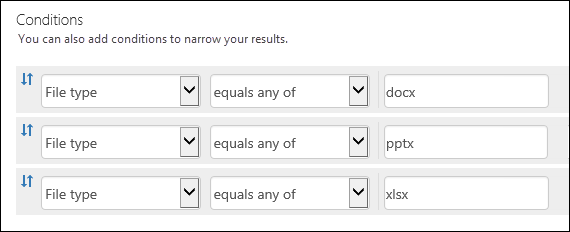
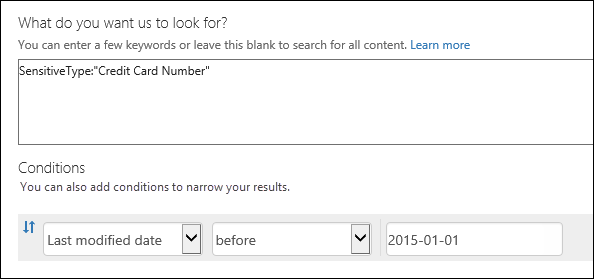
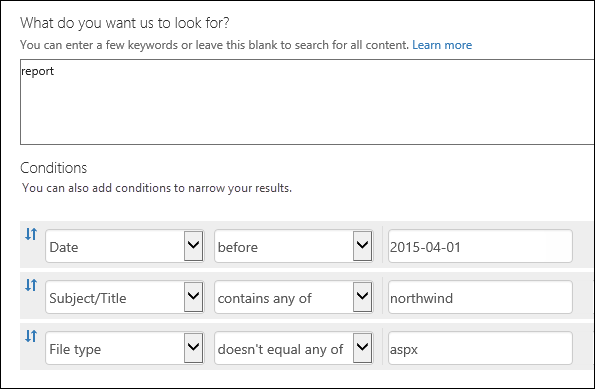
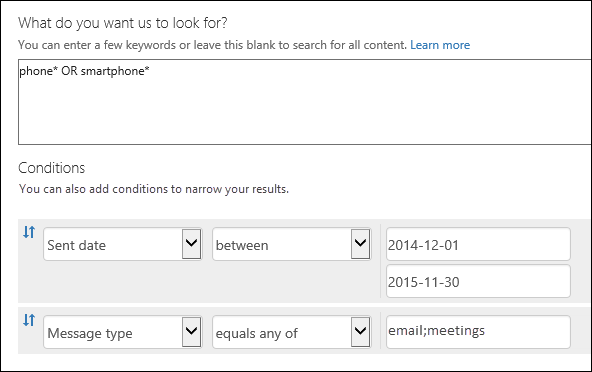

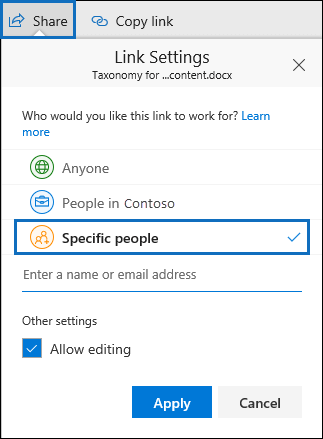


Comments